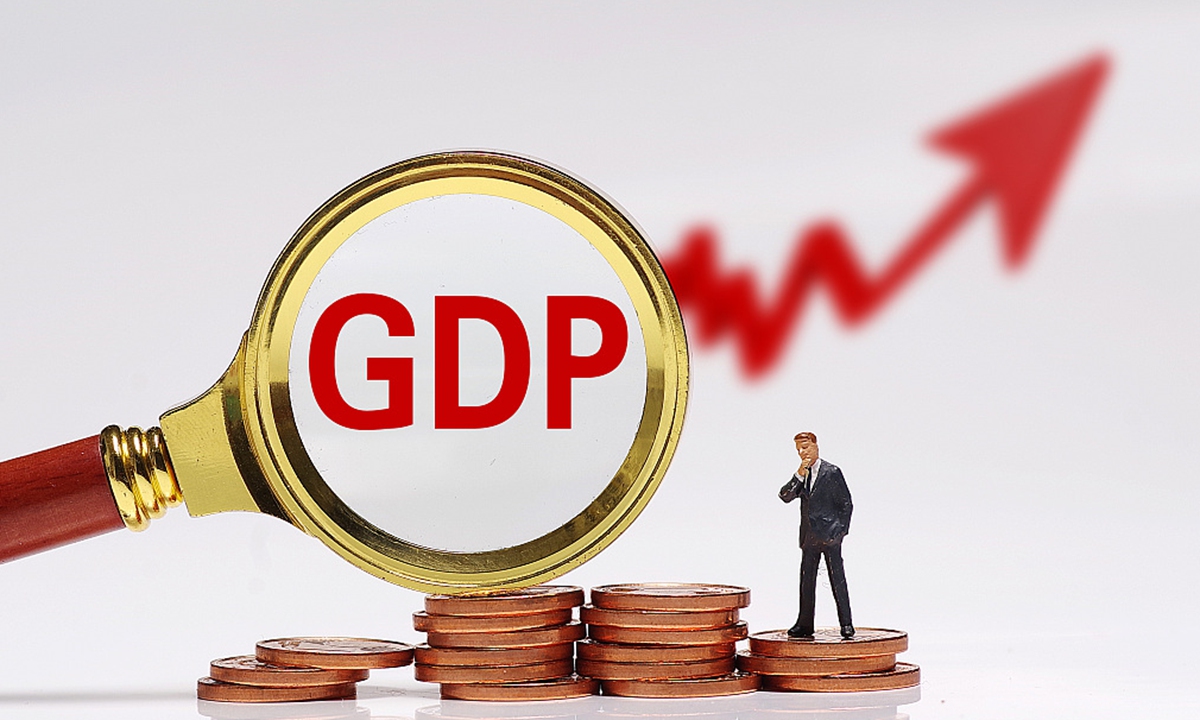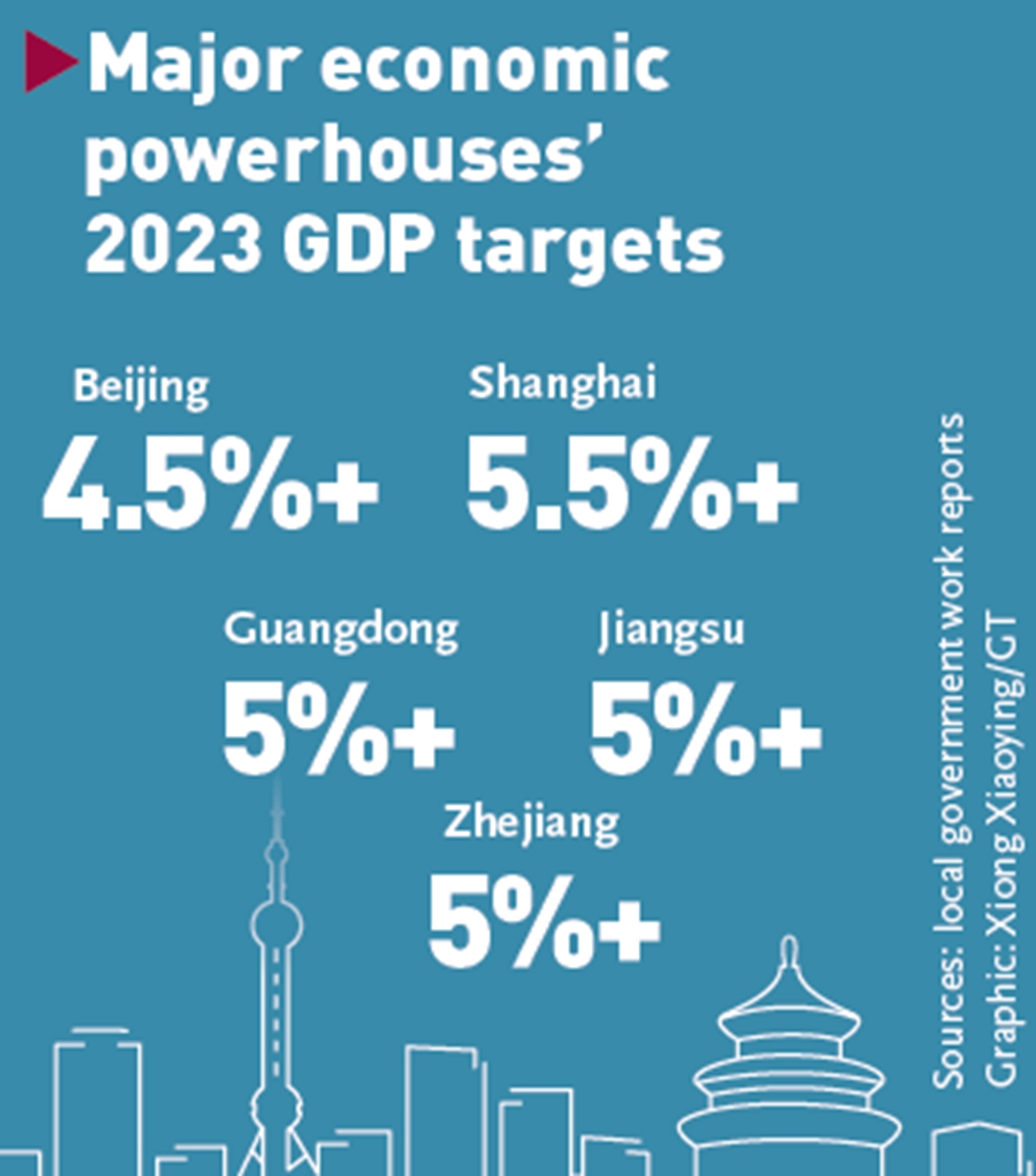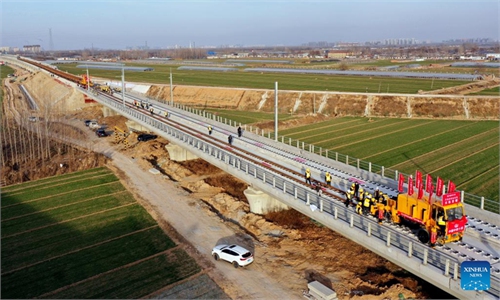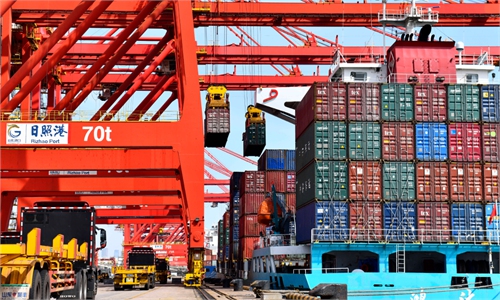Most Chinese provinces target 5-6% GDP growth rates in 2023
Consumption, investment to act as pillars of rebound

GDP photo:VCG

Photo: cnsphoto
Chinese provinces, municipalities and autonomous regions have revealed their GDP growth targets for 2023, most aiming for economic expansion of 5-6 percent this year after the government ended stringent coronavirus management measures and reopened borders.
To be specific, the targeted growth rates range from 4-9.5 percent. The highest rate was set by South China's Hainan Province, usually a tourism hotspot but also increasingly a new frontier for foreign trade, while the lowest was set by North China's Tianjin Municipality.
Four of the 31 provinces and regions aim at attaining yearly GDP growth of above 7 percent, while 20 set targets around 6 percent. The average is 5.95 percent, according to Global Times calculations.
This means that nearly all the local governments are confident that they can achieve a better-than-expected economic rebounding in 2023 - much better than the forecasts by most foreign institutions and media outlets, which fall between 4.5 and 5.5 percent.
"We have full confidence in this year's economic development, since we can see that people's expectations are already recovering. With the continuous optimization of China's COVID strategy and as the coronavirus impact eases, China's economic growth rate is expected to reach an average of 6 percent this year," Cao Heping, an economist at Peking University, told the Global Times on Monday.
Chen Jia, an independent research fellow on international affairs, told the Global Times that China's GDP growth has been "restrained" by its prudent macro policy, which means that this year's economic growth could rise further, given financial and fiscal policy fine-tuning.
In recent interviews, economists told the Global Times that they're confident that China's development will revive rapidly in early 2023, with GDP growth likely to rebound to more than 5 percent for the year, after the government has pivoted to rejuvenating the economy.
According to local governments' 2023 work reports delivered to local people's congresses, most provinces see retail sales and consumption as the primary force to drive this year's economic growth. Almost all of the major provinces and municipalities, including Guangdong, Zhejiang and Shanghai, are putting priority on the expansion of consumption.
For example, Guangdong aims to support the consumption of big-ticket items like new-energy vehicles and green and intelligent home appliances.
Zhejiang is seeking growth of about 4.5 percent in retail sales, while Beijing plans to nurture digital, cultural, and green consumption, and Shanghai aims to deepen its development as an international consumption center.
As China adjusts its supply chains, production capacity in the consumption sector will rise. Combined with the continued optimization of the support policies from the government, consumption will get back to pre-COVID levels in a short time, said Chen Jia.
Local governments are also counting on investment to drive growth, with many looking for double-digit growth in fixed-asset investment. Six provinces, including Chongqing and Hainan, have raised their investment targets this year compared with last year, and at least five plan to complete trillion-yuan level investment before the end of 2023.
According to Cao, the stabilization of the real estate industry will also improve the overall economy.
"The three-year fight with COVID had an unexpected result -- the rise of China's digital infrastructure. The digital economy has become a new engine for economic growth and will continue to play an important role," Cao said.
With growing confidence in China's growth prospects this year, experts forecast that this year's global economy needs a strong stabilizer more than ever, and China will fill that role because of its continued opening-up policies, powerful industry chain innovation network, and balanced macroeconomic policies.
"The problem facing Western developed economies is not achieving high-speed growth, but whether they could secure an economic soft landing in the midst of dealing with inflation and other structural problems," Chen said.



